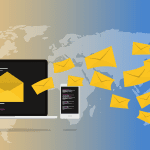
Introduction
So, let me spill the beans on how to make your product business not just profitable but also successful. The key? It’s all about crafting a product funnel.
Now, what exactly is a product, you ask? Well, it’s essentially a series of interconnected products designed to achieve the following goals:
1. Attract potential customers by offering them a freebie that’s super valuable (we’re talking top-notch stuff here).
2. Convert these leads into paying customers by luring them in with a low-priced, high-value introductory product.
3. Convince these new customers to take the plunge and buy your flagship product.
4. Seal the deal by tempting them with additional backend offers that maximize your profits.
Ready to get started on setting up your product funnel? Here’s a handy checklist to guide you through the process…
Your Lead Magnet
So, check this out – here’s the scoop on the, must-have freebie you can use to grab folks’ attention and reel ’em into your sales funnel.
Now, we’re honing in on memberships in this handy list, but your lead magnet can really be anything from a snazzy info product to a cool tool.
Think along the lines of a nifty report or eBook, a radiant audio file, a killer video, a handy-dandy checklist, some snazzy worksheets, a mind-blowing mind map, slick templates, a gear list to die for, a snazzy infographic, a cheat sheet that’s pure gold, an awesome app, access to a rockin’ live event (like a webinar), or even membership in a super cool membership site.
You name it, as long as it’s something your peeps will dig.
Now, here’s the insider tip – we’ve discovered that a membership pass is like magic when it comes to luring folks into your funnel. Why, you ask?
Well, memberships come off as super valuable, so offering free entry is a real draw. Plus, there are extra perks to boot.
Think repeat exposure to your killer content and offers (every time someone logs into your membership), plus the added bonus of boosting your expert status in your niche.
And that, my friend, means more sales and higher conversions coming your way. How cool is that?
When developing your lead magnet, it’s crucial to keep a few key points in mind:
Before diving, take the time to do thorough market research.
It’s essential to ensure that your lead magnet aligns with the desires and needs of your target audience within your niche.
Craft something that strikes a balance between being valuable and leaving room for more.
Your lead magnet should offer significant value to potential leads while naturally guiding them towards considering your paid product or service.
For instance, consider offering a template for a sales letter as your lead magnet.
This can pave the way for promoting a comprehensive copywriting course to those who engage with your initial offer.
Ensure that your lead page exudes professionalism. Both the design and the written content on this page should reflect a high level of professionalism.
This will not only attract more subscribers to your list but also help you establish credibility in your field.
Your ‘Trip Wire’
Hey there! So, picture this – you’ve got this amazing “no brainer” deal that’s super affordable but packs a lot of value.
It’s like the golden ticket to turning your potential customers into actual cash-paying ones.
This deal can come in many shapes and sizes, like eBook, a membership site, or even a cool video.
Now, when you’re creating this irresistible offer, keep a few things in mind:
1. Keep the price low. You want your prospects to jump on this without a second thought. Somewhere between $5 to $20 usually does the trick.
Just make sure that what you’re offering is worth way more than that. You want your customers to feel like they’re getting a steal!
2. Make sure your offer is closely tied to your main product.
This way, the customers who grab your low-cost deal are more likely to be interested in what else you have to offer.
Pro tip: A smart move is to take a piece of your main product and use it as your low-cost deal.
For instance, if you’ve got a 10-module online course, offer one of those modules as your tripwire product.
Those who love that module will probably want the rest of the course too.
And don’t forget to set up an autoresponder on the backend.
When someone buys your tripwire product, add them to a mailing list where they’ll get a series of emails that gently nudge them towards buying your main product.
It’s all about guiding them through your sales funnel smoothly.
Your ‘Core’ Offer
This product is the cornerstone of your offerings, likely priced at $97 or higher.
You’ve already conducted thorough market research, so you’re confident that your audience will be thrilled with it.
Moreover, you’ve carefully crafted a seamless transition from your lead magnet to your tripwire and now to this core product.
When developing this offering, consider the following key points:
First and foremost, define your unique selling proposition. What sets your product apart from your competitors?
Your USP should succinctly articulate why your product (or business) stands out as superior.
For instance, FedEx distinguished itself with the USP, “When it absolutely, positively has to be there overnight,” emphasizing their speed and reliability.
Similarly, Wal-Mart has positioned itself as the “low price leader.”
Reflect on what you bring to the table that distinguishes you from your competition.
Which benefit resonates most with your customers?
- Is it the of high prices indicating quality?
- Or perhaps the appeal of low prices for great value?
- Maybe it’s the promise durability that catches their attention.
- Could a strong guarantee be what sets you apart?
- Does exceptional customer service make a difference?
- Is it the speed of service that they value most?
- Or is it the premium quality that draws them in?
- Could it be the unique way your product is crafted?
- Do your credentials add to your appeal?
- Or is it the offer of something free, like installation on software?It’s crucial to pinpoint the value that truly matters to your customers and highlight it in your offer copy.
To enhance your offer, consider including additional bonuses.
For instance, if you’re selling a diet guide, you sweeten the deal by throwing in a meal planning app as a bonus.
Another effective tactic is to incorporate backend offers.
These can be strategically placed in various locations, such as within main offer itself (like a hyperlink in an eBook, video, or membership site), on the thankyou/download page for immediate visibility post-purchase, within the added bonuses, or in follow-up emails to customers.
Smart approach we’ve found success with is utilizing Lead Magnets from other product funnels as bonuses for core offers.
This not only boosts the value of your primary offering but also has the potential to guide customers from one funnel to another, provided that the funnels and offers align closely with each other.
Your Upsell
When you’re putting together your core offer, don’t forget about creating related offers to sweeten the deal.
These additional offers can really take things up a notch and add value what you’re already bringing to the table.
For instance, if you’re offering a copywriting course as your main product, think about what else you can offer complement it.
Maybe an advanced copywriting course for those looking to dive deeper into the subject.
Or perhaps personal coaching sessions to provide one-on-one guidance support.
You could even throw in a handy set of copywriting templates to make the writing process a breeze.
Make sure you’re not missing out on opportunities to promote these additional offers throughout your sales funnel.
Whether it’s through a cart bump on the order form, links within your products, follow-up emails, or even in-person interactions, get the word out about these extras.
It’s all about enhancing the overall experience for your customers and giving them even more value for their investment.
Parting Thoughts
Why limit yourself to building a business solely around one product when you can create a product funnel instead? This strategy offers two significant benefits:
Firstly, it simplifies the process of converting casual browsers into paying customers.
When individuals are drawn to your complimentary and low-cost offerings, they are more likely to explore and invest in your primary product.
Secondly, it opens up multiple revenue streams for your business.
Rather than making a single sale to customer and then moving on to acquire new ones, you have the opportunity to sell various products to the same customer repeatedly.
This approach is crucial for establishing a thriving and profitable business.
Doesn’t that sound appealing? If so, why not kickstart your product funnel planning today?
As a final move, Let’s dive into Funnel Performance Analysis using Google Analytics.
Utilizing tools like Google Analytics is essential for collecting valuable data on metrics such as traffic, leads, bounce rate, click-through rate, and conversion rate, among others.
These metrics play a crucial role in monitoring and evaluating performance.
It’s important to conduct a thorough analysis.
By delving deep into the data mentioned above, you can quickly pinpoint any areas of concern within your funnel and take necessary steps to address them.
It is crucial to continuously strive for improvement and updates.
Through regular analysis of your performance metrics, you can enhance and tweak your content, products, and conversion strategies accordingly.
This iterative process ultimately leads to a more effective and high-converting sales funnel.









